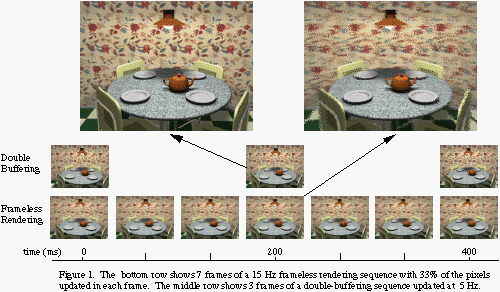

Frameless Rendering

|
|
An important issue in scene generation is the scheduling necessary to balance frame rate and image fidelity appropriately. We call the class of rendering and simulation techniques that addresses these issues time-critical computing; it enables an application to maintain an interactive frame rate by automatically reducing presentation quality, thus preserving interactivity at all times even in graphics environments with different performance characteristics. It relies on degradable algorithms to implement these trade-offs, a scheduler to decide dynamically which trade-off is most appropriate, and a predictor to estimate the performance of the selected trade-off. We have been investigating degradable algorithms for scan-conversion-bound rendering [WLOK95][BISH94], as well as for collision detection [HUBB95a][HUBB95b]. Previous interaction/modeling projects have included a time-critical approach to collision detection that approximates object shapes at multiple levels of detail by using sets of hierarchical spheres [HUBB95a][HUBB95b].
|
[WLOK95e]M. Wloka and R. Zeleznik, "Interactive Real-Time Motion Blur," Proceedings of CGI"94: Insight Through Computer Graphics, 1995.
| Home | Research | Outreach | Televideo | Admin | Education |